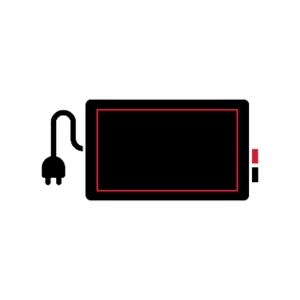Battery Maintenance
Most people are familiar with the generic black box wet battery that contains liquid inside, which can be seen by opening the two end caps on the top. Unlike these generic wet batteries, AGM and gel batteries are sealed. However, they do have a safety vent in case gas needs to escape when there is an overcharge. This vent reseals itself once the battery is done gassing and the battery will still be usable, although it will not provide the same level of power. With the wet battery, you break down the water in the electrolyte, the gas that it generates is allowed to dissipate into the atmosphere. So, in a severe overcharge situation, you typically lose liquid from that battery. In some cases with a wet battery, you can always replenish it by adding more liquid, but then you are faced with a maintenance issue since you need to constantly keep track of the liquid levels. Furthermore, most wet batteries in the market today are not user serviceable. Therefore, if you start losing liquid from any wet battery, it is pretty much a dead-end.
Battery Charging
AGM and Gel batteries are sealed so they do not face this maintenance issue. Lead acid batteries are not user serviceable and are maintenance-free. However, that being said, AGM batteries have many advantages over gel batteries in terms of the forgiveness over the recharge voltage range allowed since gel batteries are most sensitive. This means that you do not want to charge an AGM battery using a gel battery charger or vice versa. The use of a specified battery charger is always recommended. That being said, there are new chargers on the market being released these days, which offer different charging algorithms that will charge all AGM, Gel and wet batteries. Some of these chargers have a selectable switch but some are just user independent. These chargers are fine to use, but having a charger that is designed for one particular battery type is the better way to go.

Battery Discharging
In the past, most chargers could not initiate if the battery voltage drops to 6-8 volts. However, new chargers that have been designed and tested by specialized engineers in the last 5-7 years all seem to activate at voltages as low as 0.1. That issue is disappearing for deeply discharged AGM battery that is difficult to charge using an older conventional charger. All that being said, a healthy battery should not drop below 10.5 volts for all acid type batteries for currents with 25 amps and below.

















How do I check how far my AGM battery is discharged? For example, weather it is 50% discharged or 70% discharged etc?
Assuming that you’re referring to a 12V AGM battery, you can find out how much it has been discharged by checking its voltage:
1. 13.2V-12.8V indicates that your battery is fully charged.
2. 12.4V indicates your battery is 75% charged or 25% discharged.
3. 12.2V means your battery has been discharged half way to 50%.
4. 12.0V indicates your battery is 75% discharged, leaving only 25% of charge.
Please note that lowering the voltage below 12 volts is highly discouraged as it may harm your battery, especially in the longer term. Therefore, it is important to re-charged your AGM battery if the voltage every drops below 12V. Hope this information has been helpful!
I never guessed that maintaining my lead acid battery is this easy!
Nice post. I found this blog uncertainly but found it valuable. I am bookmarking this for more updates.